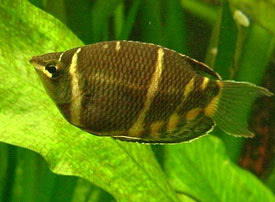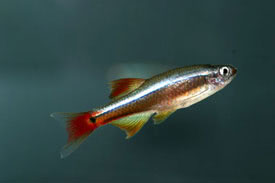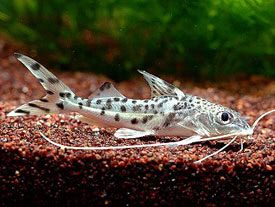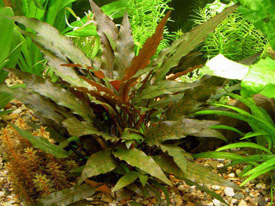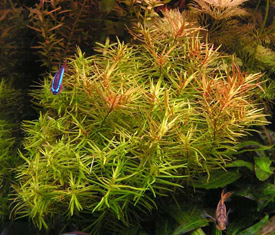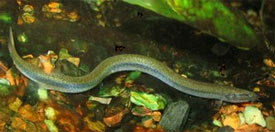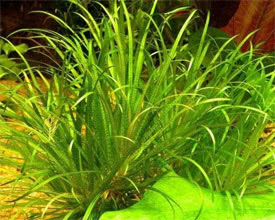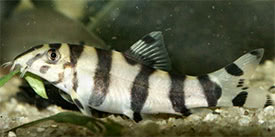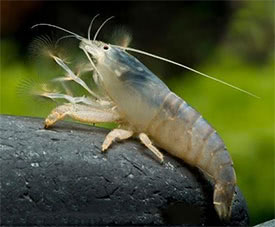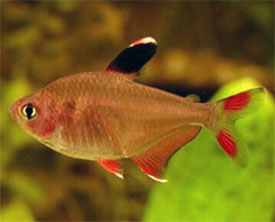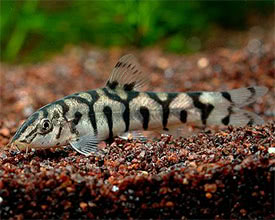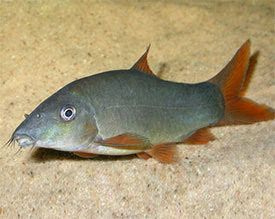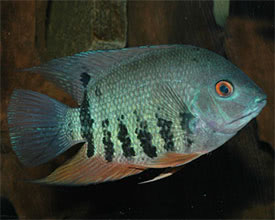Yasuhikotakia morleti - Skunk Loach
 Magyarul / Hungarian
Magyarul / Hungarian

 Magyarul / Hungarian
Magyarul / Hungarian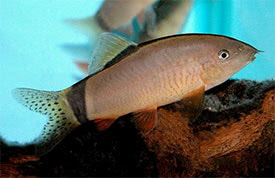
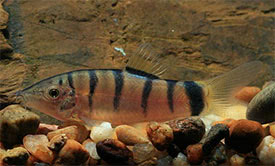



- Scientific name: Yasuhikotakia morleti
- Synonyms: Botia horarae (Smith, 1931), Botia morleti (Tirant, 1885)
- Common name: Skunk Loach
- Group: Loaches
- Distribution: Asia; Thailand, Laos, Cambodia and Vietnam
- Size: 8,5-10 cm
- Biotope: It can be found in both standing and flowing waters, usually among rock crevices or the fish digs underneath rocks and submerged objects such as tree roots.
- Social behavior: It is not a wise choice to a community tank. It can get aggressive to members of their own species, and nippy to other fish, if there are not enough hiding places, or when maintained in smaller groups, so always buy a small group of at least 5-6 species.
- Diet: Omnivorous; They are chiefly carnivorous in the nature and eat molluscs and other invertebrates, but will also eat some vegetable matter, such as soft-leaved aquatic plants. In the aquarium they will accept live and frozen foods, but they eat sinking pellets too. As most botiids they also prey on aquatic snails.
- Breeding: It has not been bred in aquarium.
- Tank: Minimum 120 litres
- Population: 5 fish for 150 litres
- Decoration: Cover the tank bottom with sand or small gravel as they like to dig in the substrate, and build hiding places of larger stones and roots, or use plastic tubes and upturned flower pots. Subdued lighting is required, or use floating plants to dim lightling.
- Temperature: 23-28 °C
- pH: 6.0-7.5
- Hardness: 2.0-12.0 dGH
- Lifespan: 6-10 years
Description: Skunk Loach has a typical botia shape with flat belly, arched back and long cylindrical body with a forked tail. There are 3 pair of barbels around the snout. The Skunk Loach has a yellowish-white to light brown body with some greenish tingle. The fish has a distinctive 'skunk-like' stripe running down the length of its back, starting at the tip of its mouth and ending at a broad black band encircling the base of its tail. The yellowish tail has a rows of brown dots. The rest of the fins are pale. Juveniles have a series of dark, vertical bars on the flanks which fade as they reach maturity. The Skunk Loach usually spends the day hiding, but it will get quite active after dusk. Frequent water changes of about 10-20% a week are needed for this loach.
Adult females have fuller-bodies and grow a little larger than males.
Is is not possible to breed them in a home aquarium, possible because they are seasonal, migratory spawners in the wild. These loaches are farmed commercially in far-east fish farms for the hobby via the use of hormones. During the high water levels they migrate to flooded areas, and smaller tributaries, where they possibly spawn, and juveniles are migrate back to main river channels around the months of November and December each year.
Sources:
http://www.fishbase.org/summary/11321
http://www.seriouslyfish.com/species/yasuhikotakia-morleti
https://www.loaches.com/species-index/yasuhikotakia-morleti
http://animal-world.com/encyclo/fresh/loaches/SkunkLoach.php
http://www.fishbase.org/summary/11321
http://www.seriouslyfish.com/species/yasuhikotakia-morleti
https://www.loaches.com/species-index/yasuhikotakia-morleti
http://animal-world.com/encyclo/fresh/loaches/SkunkLoach.php
Hasonló vízparamétereket igénylő fajok







